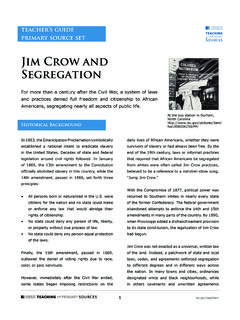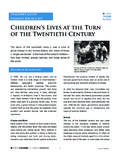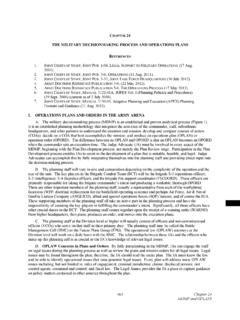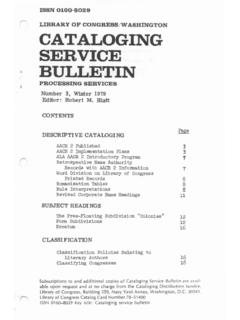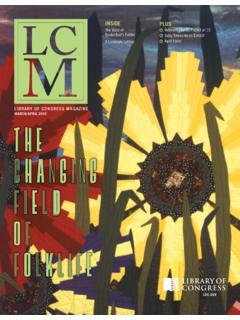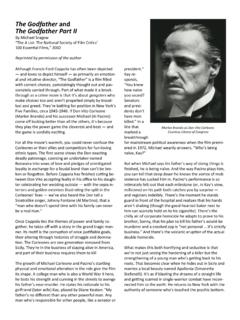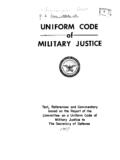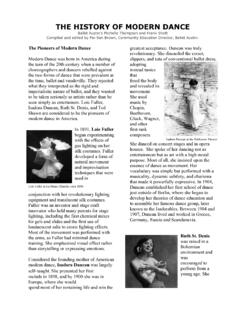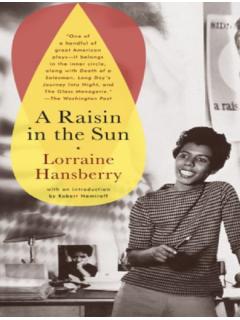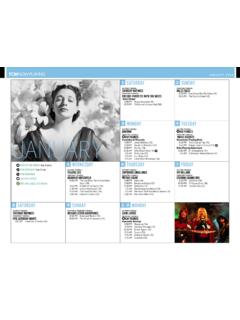Transcription of The Great Dictator - Home | Library of Congress
1 Ironically, one of the most beloved men in history was born within four days of one of the most despised and that the demon, Adolf Hitler, so strongly resembled the clown, Charles Chaplin. Some claim that Hitler deliberately chose his mustache to resemble Chaplin s, who had enjoyed the love and respect of audiences around the world. Contemporary journalists and car-toonists delighted in pointing out the simi-larity in appearance between the two men. A song about Hitler, published in Britain in 1938, asked the question, Who is this Man?
2 (Who Looks like Charlie Chaplin). How could Chaplin, who had reached the apogee of his popularity and influence, avoid the role that fate seemingly had thrust upon him? In many ways, the creation of The Great Dictator (1940) was virtually inevitable. Over a decade after the rest of the film industry had accepted talking pictures, the Great -est star of the silent-film era began his first full-dialogue film. His subject was Adolf Hitler and his theme, the dangerous rise of European fascism. De-spite death threats once his project was announced, Chaplin forged ahead with his satire.
3 In his 1964 auto-biography, Chaplin admitted, Had I known the actual horrors of the German concentration camps, I could not have made The Great Dictator ; I could not have made fun of the homicidal insanity of the Nazis. The Great Dictator is a tale of two worlds: the palace, where Dictator Adenoid Hynkel rules, and the ghetto, where a Jewish barber struggles to make a living and survive. The comedic device of the film is the resem-blance between the Dictator and the Barber, who is later mistaken for the Dictator .
4 The theme of the sto-ry, at its basic level, is the struggle between good and evil, reflected in the balance between the two worlds. The film begins with this title: This is a story of a pe-riod between two World Wars an interim in which Insanity cut loose, Liberty took a nose dive, and Humanity was kicked around somewhat. It is fol-lowed by a prologue, set in World War I, in which the Jewish Barber fights as a patriotic, although ineffec-tive, Tomanian soldier. This sequence, reminiscent of Chaplin s World War I comedy Shoulder Arms (1918), contains elements of nightmarish vio-lence as well as humor, a combination that occurs often in the film.
5 The Barber must fire the enormous Big Bertha gun, is pursued by a defective gun shell, loses a hand grenade in his uniform, accidentally marches with the enemy, and later finds himself up-side down in an airplane. The prologue reminds the audience of the malevolence of machines, the horror of war, and the senselessness of destruction. Within this framework, the stories of the Barber and Hynkel in their two moral universes, represented by the good People of the Ghetto and the evil People of the Palace are regularly intercut.
6 The film concludes with an epilogue set after the start of the war in Europe, soon to be called World War II. It shows the Barber, mistaken for Hynkel, forced to address a massed rally. The final speech, however, is not given by the Barber character but by Chaplin himself, who pleads for peace, tolerance, and understanding. The greatest moment of Chaplin s satire on Hitler and the rise of dictators is the scene in which Hynkel performs a dance with a globe of the world. This sce-ne, which stands with the very best set pieces of Chaplin s silent films, requires no words to convey its message.
7 Accompanied by the delicate, dreamy prel-ude to Act I of Wagner s Lohengrin (Hitler s favorite Wagnerian opera), Hynkel performs a graceful, se-ductive ballet with a balloon globe, a wonderful sym-bol of his maniacal dream of possessing the world for his pleasure. Yet when he believes he has it within his grasp, the bubble literally bursts. This is Chaplin s symbolic comment on the futility of the Dictator s as-The Great Dictator By Jeffrey Vance Dictator Adenoid Hynkel (Charlie Chaplin) demonstrates how he plans to control the world.
8 Courtesy Library of Congress Collection. pirations and reflects his optimistic belief that dicta-tors will never succeed. Probably the most famous sequence of The Great Dictator is the five-minute speech that concludes the film. Here Chaplin drops his comic mask and speaks directly to the world, conveying his view that people must rise up against dictators and unite in peace. The most enduring aspects of the final speech are its aspirational quality and tone and its underlying faith in humanity. Chaplin sketches a hopeful future in broad strokes and leaves the imple-mentation of his vision to others, despite the fact that the more unsavory aspects of human nature may prevent mankind ever reaching his promised utopia.
9 Although some may find Chaplin s message clich , and even frustrating, one cannot help but be moved by the prescience of his words and the appeal of his powerful indictment of all who seek to take power unto themselves to the detriment of everyone else. The final speech of The Great Dictator remains rel-evant and valuable in the twenty-first century and likely will remain so as long as conflict corrupts hu-man interaction and despots endure. With the exception of Gone With the Wind (1939), no other film of the period was met with such antici-pation as The Great Dictator .
10 The contemporary press was generally favorable toward the film follow-ing the world premiere in New York City at two broadway theaters the Capitol Theatre and Astor Theatre simultaneously on October 15, 1940. Alt-hough Bosley Crowther, film critic for the New York Times, thought the film too long and somewhat rep-etitious, he nevertheless wrote a very strong review noting it to be ..a truly superb accomplishment by a truly Great artist and, from one point of view, per-haps the most significant film ever produced.

